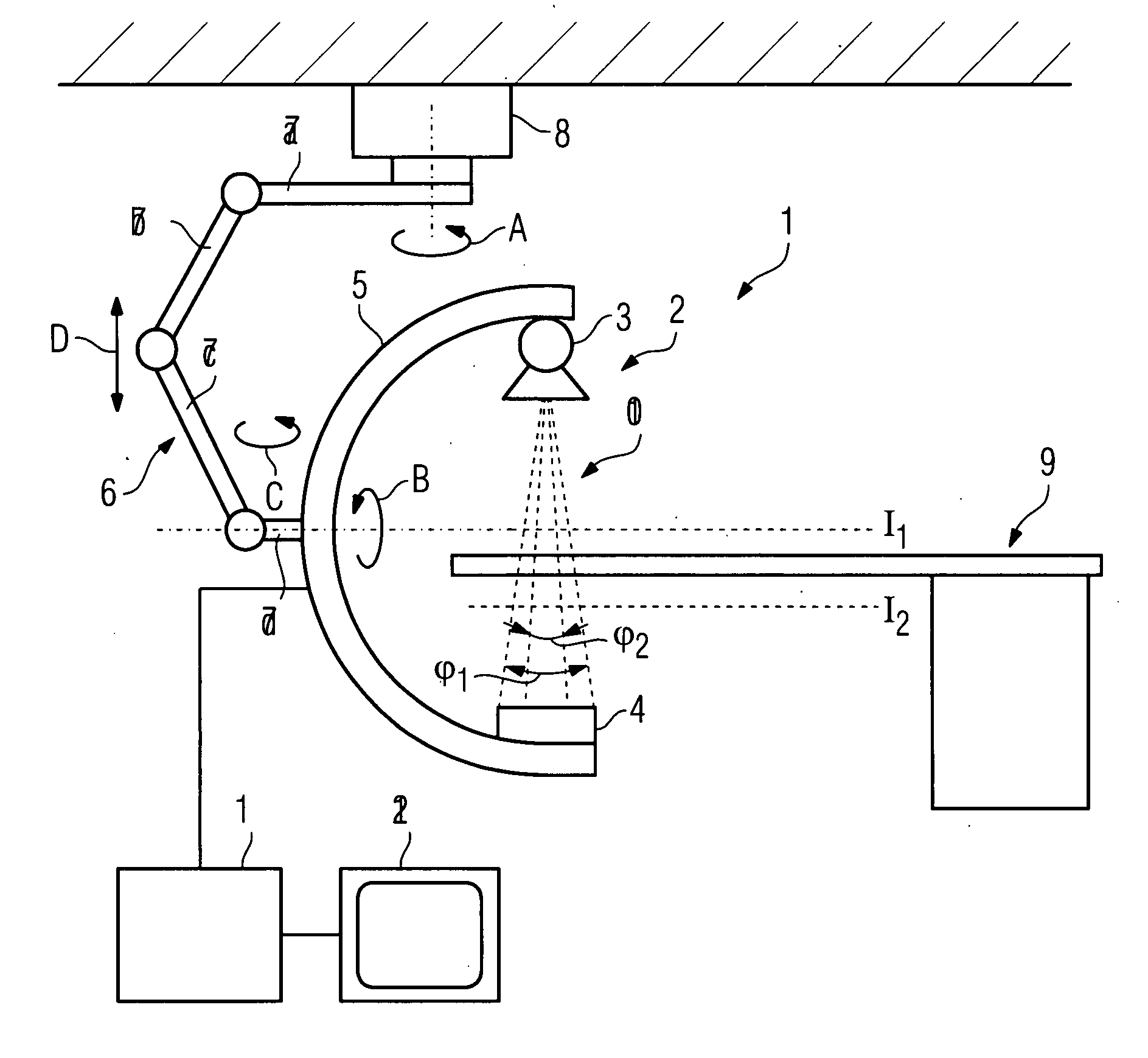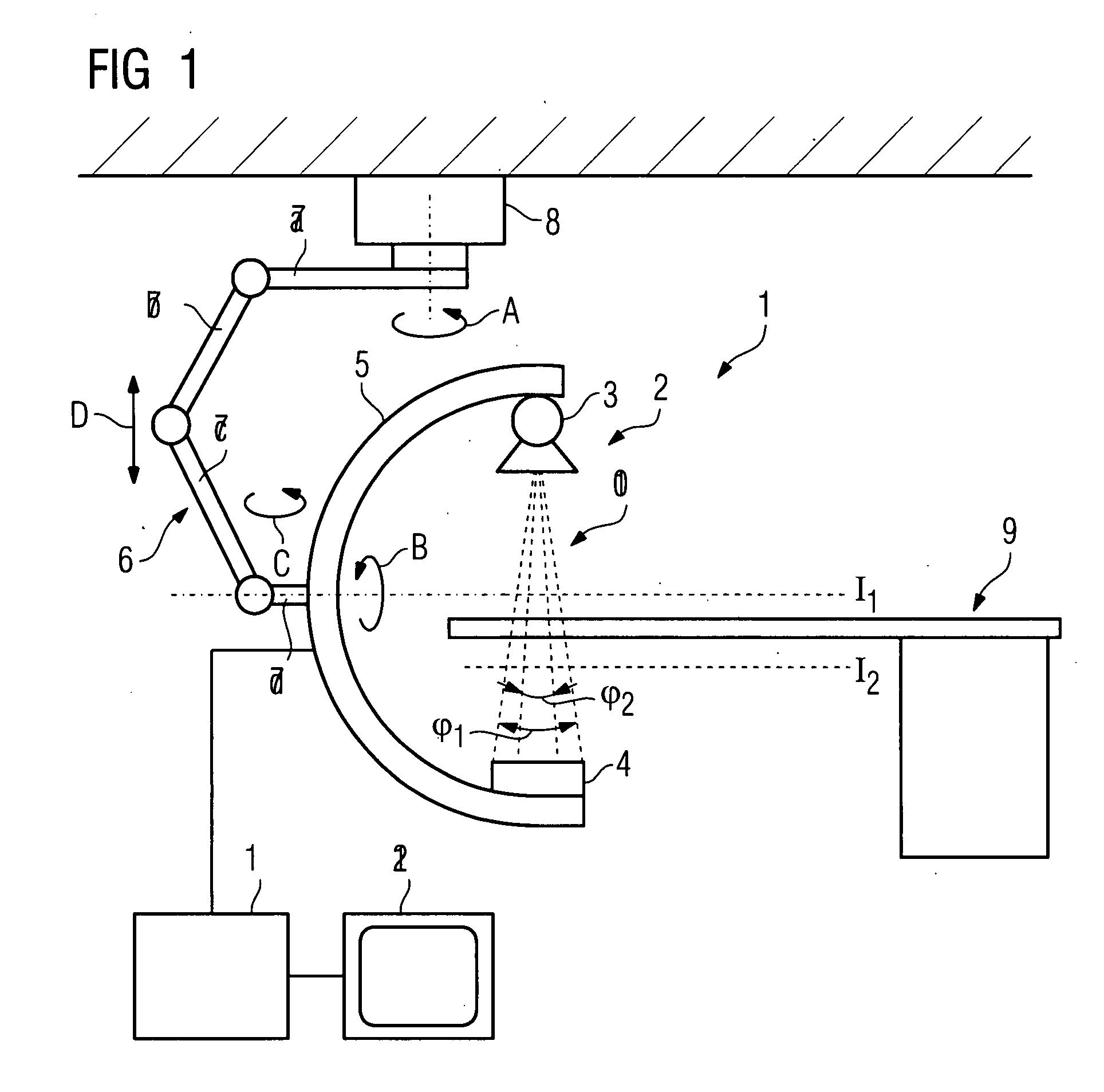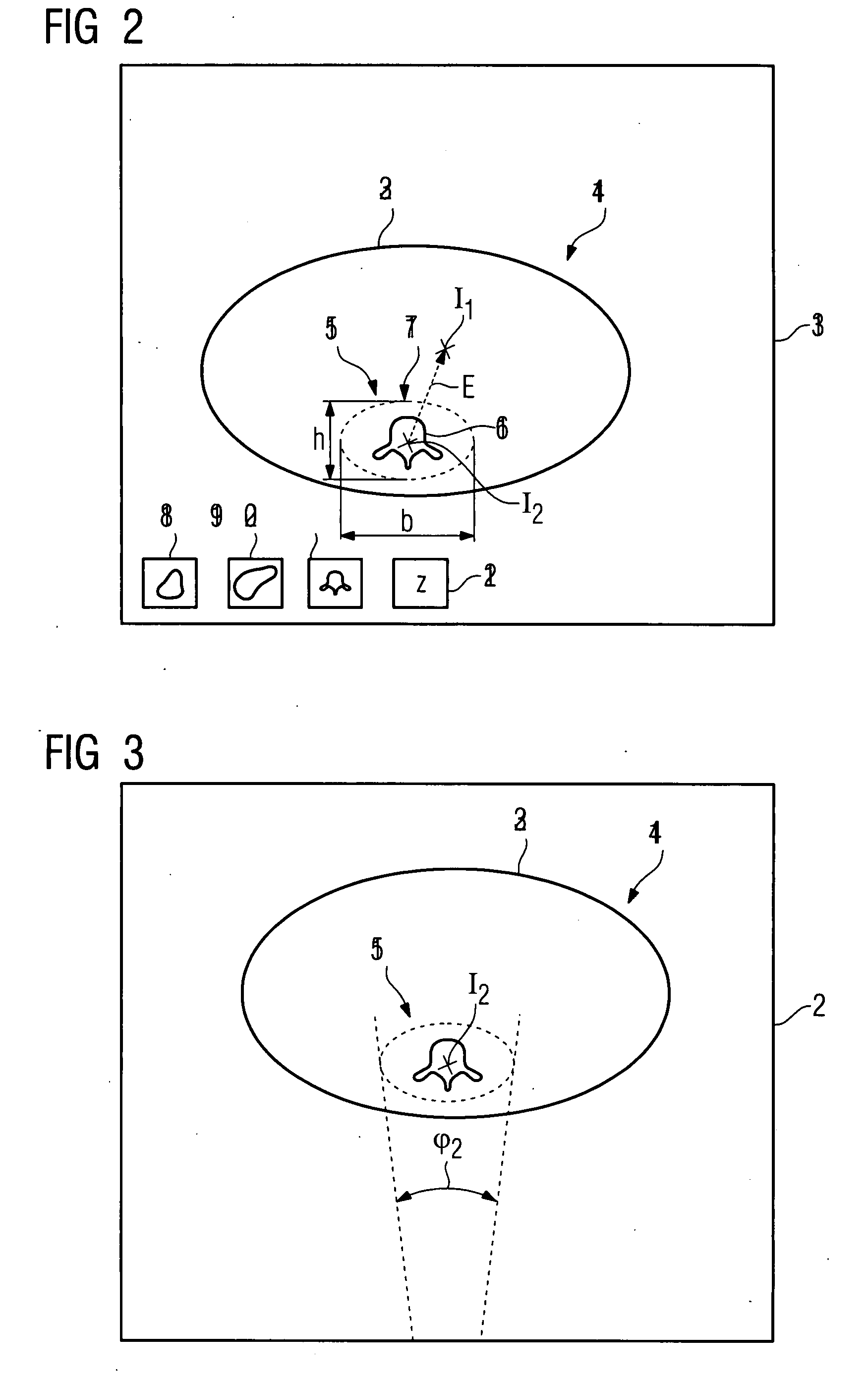Method for recording images of a definable region of an examination object using a computed tomography facility
- Summary
- Abstract
- Description
- Claims
- Application Information
AI Technical Summary
Benefits of technology
Problems solved by technology
Method used
Image
Examples
Embodiment Construction
[0031]FIG. 1 shows a computed tomography facility 1, comprising an image recording facility 2, comprising a radiation source 3 and a radiation detector 4, for example in the form of a solid detector. The radiation source 3 and radiation detector 4 are disposed on a C-arm 5, which is in turn disposed on a support arm structure 6 in the manner of a robot arm, which in the example shown consists of four arms 7a, 7b, 7c and 7d, which are linked to each other by way of corresponding joints. The arm 7a is disposed on a ceiling-side support 8, on which it is disposed in such a manner that it can be rotated about a first axis of rotation, shown by the arrow A. The C-arm is disposed on the support arm 7d in such a manner that it can be rotated about a horizontal axis B, in order to be able to record computed tomography images by rotating the image recording facility 2, and it can also be pivoted as required about a vertical axis, as shown by the arrow C. The support arm structure 6 allows a ...
PUM
 Login to View More
Login to View More Abstract
Description
Claims
Application Information
 Login to View More
Login to View More - R&D
- Intellectual Property
- Life Sciences
- Materials
- Tech Scout
- Unparalleled Data Quality
- Higher Quality Content
- 60% Fewer Hallucinations
Browse by: Latest US Patents, China's latest patents, Technical Efficacy Thesaurus, Application Domain, Technology Topic, Popular Technical Reports.
© 2025 PatSnap. All rights reserved.Legal|Privacy policy|Modern Slavery Act Transparency Statement|Sitemap|About US| Contact US: help@patsnap.com



